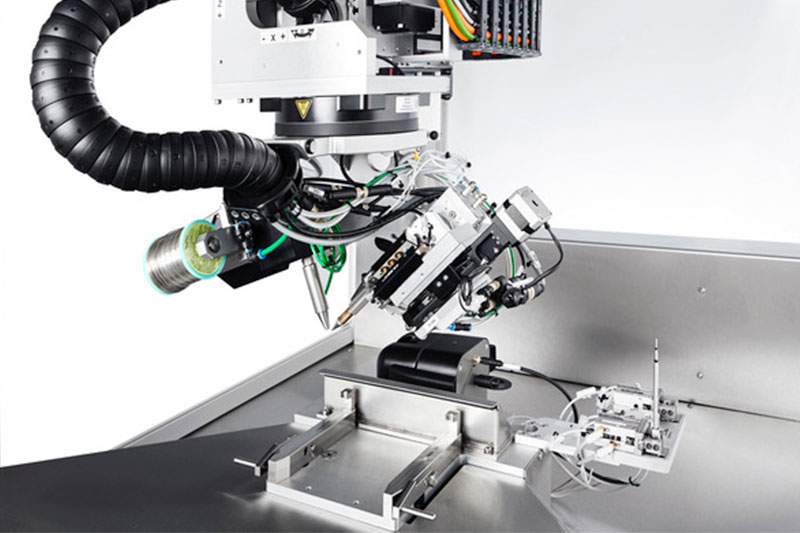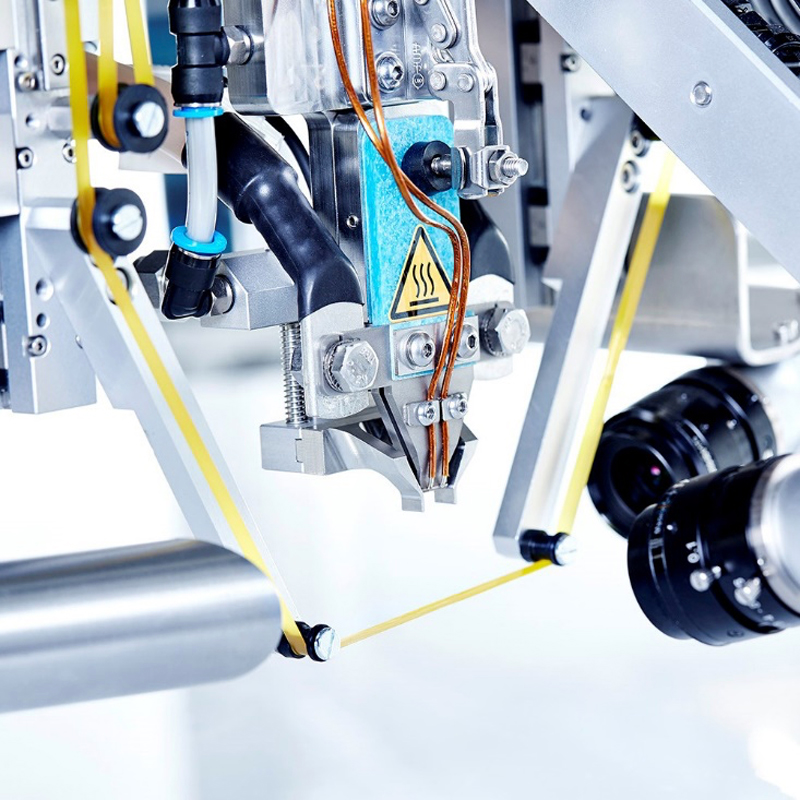Generally, piston soldering is used for single spot soldering. In combination with the EUTECT automation solutions, a high, consistent quality is achieved.
EUTECT Modular System
Piston soldering module

As a result, automated piston soldering is a widespread process that can be used universally. Due to controlled processes, the selected soldering tips, in combination with a controlled heat input, are always placed at the same position, thus achieving a high reproducibility.

Induction soldering module

In non-contact induction soldering, the solder joint is heated by electromagnetic induction. Depending on the application and the materials to be heated, specific loop geometries and frequencies are necessary.
The applied heat outputs can be controlled very precisely. A significant advantage is the fast, uniform heating of the solder joint. Due to the physical mechanisms of action, the induction eddy currents only heat electrically conductive materials. During induction soldering, enclosures, brackets and other plastic components in the vicinity of the soldering point are therefore not exposed to direct thermal stress.


Thermode soldering module

During thermode soldering, the heat is transferred to the component via contact. The thermode is placed on the component and the heat input is only started when the contact pressure is reached.
Due to its properties, the thermode stamp material developed by EUTECT can be heated to a temperature of up to 450 °C in a very short time, which is continuously controlled during the soldering process. After soldering, the thermode can be brought to settling temperature with the help of an integrated cooling system.


Eutect thermode soldering












